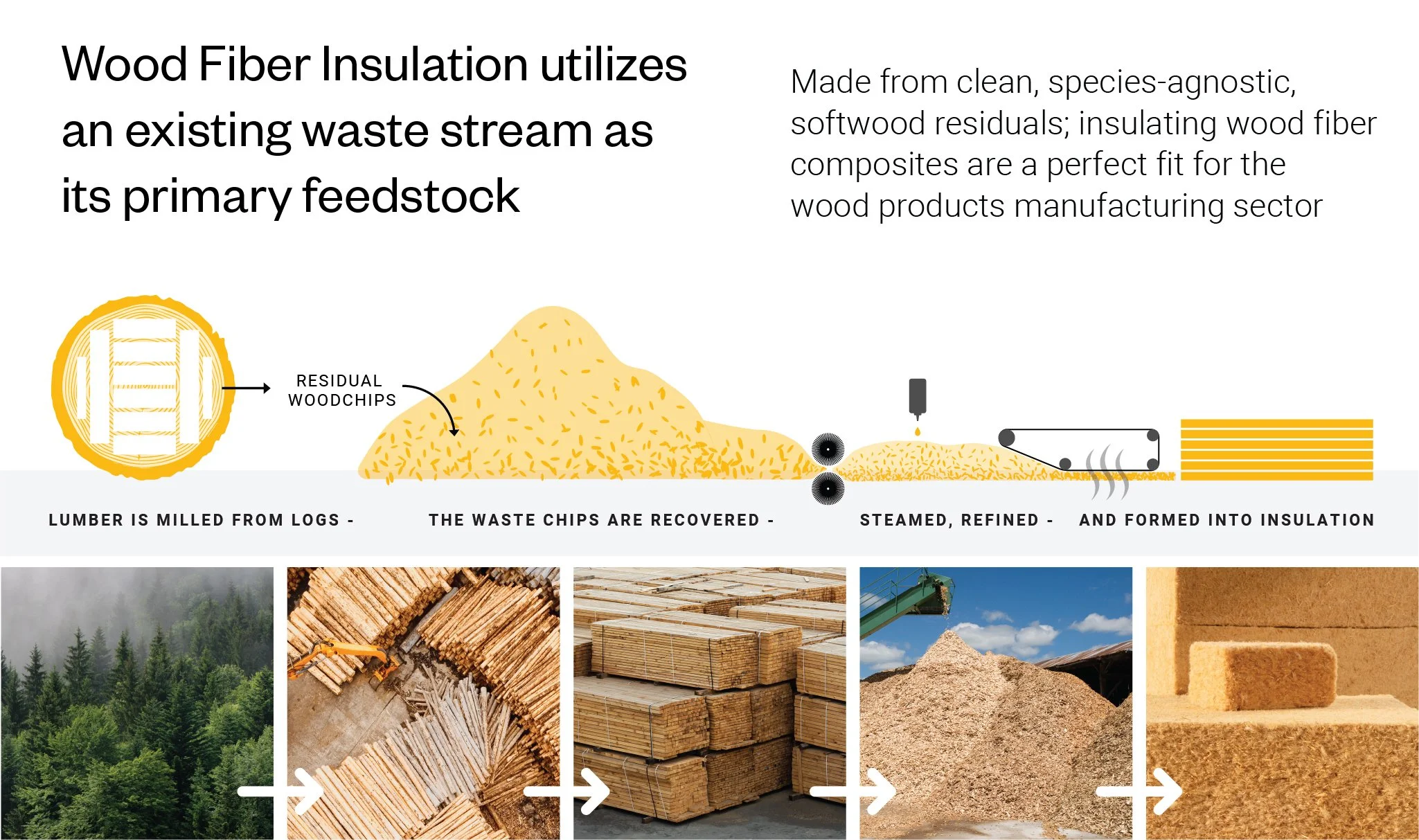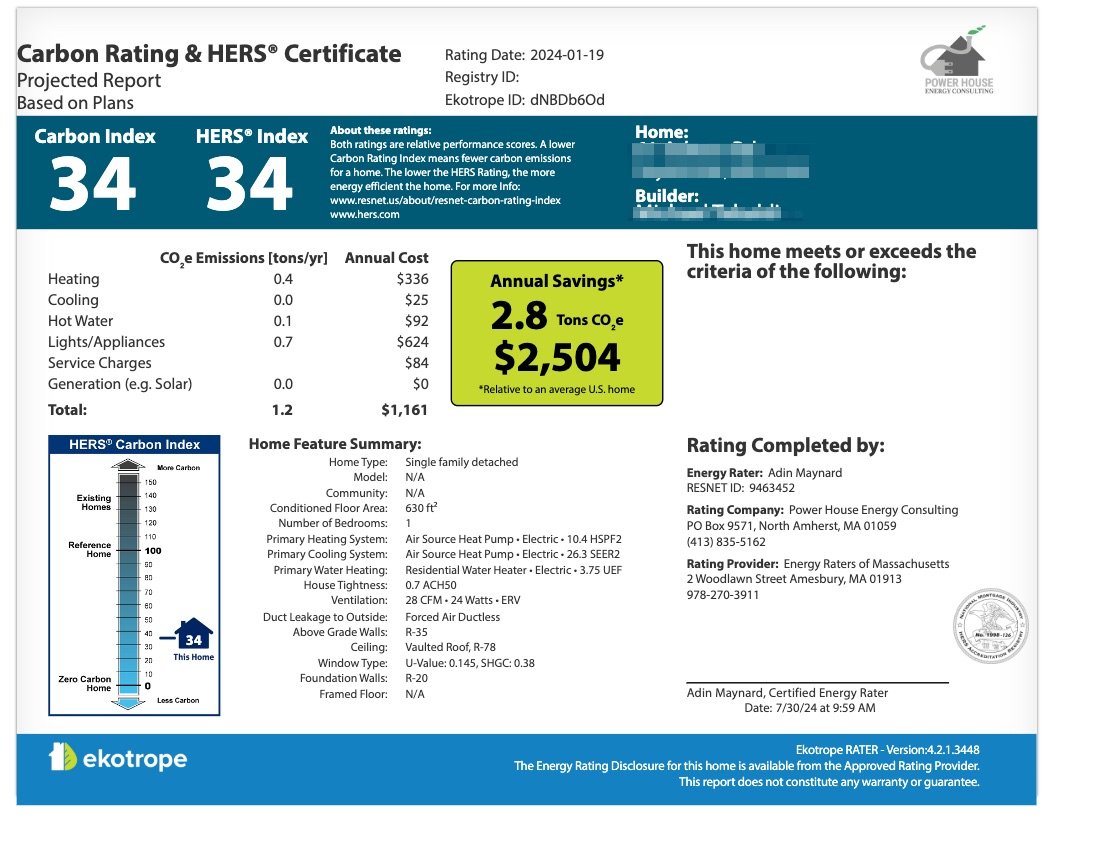Wood Fiber, a Low Energy Insulation
A major component in our fight against climate change is finding new sustainable building practices. Insulation is one of the key materials needed to change for the better and wood fiber insulation (WFI) is a great example that is pushing the building industry in the right direction. Europe has been manufacturing and utilizing WFI for over 20 years and has proved that it is an effective and trustworthy material to use in construction.
Due to high shipping costs, limited availability, and code challenges, the use of WFI in North America has been minimal. As we start to see code changes and new manufacturing in North America, WFI has a rapidly growing demand. Derived from renewable sources, wood fiber insulation not only offers excellent thermal performance but also provides numerous environmental and health benefits.
Wood fiber, from the waste of other materials
Wood fiber insulation is made out of waste from lumber manufacturing plants. This waste is in the form of wood chips and sawdust and undergoes a fairly simple refining process that turns the raw material into a mixture of wood fiber and additives that is specific to its intended application. This mixture can be made into loose fill, batts, and rigid board. Timber HP, headquartered in Madison, Maine, is pioneering the production of WFI products in North America, setting the standard for sustainable and eco-friendly building materials.
As HERS raters we can influence the building carbon footprint
As building performance professionals and HERS Raters, we appreciate the use of carbon-negative materials like WFI. Unfortunately, the HERS rating system currently does not account for the carbon emissions of the building nor the embodied carbon of the materials used. However, that is set to change, driven by consumer and homeowner interest in healthy homes with reduced impact on the environment. HERS ratings take into account operational efficiency and energy performance. As the impacts of climate change are increasingly affecting our culture, we must look deeper; at the carbon footprint of buildings themselves. Innovative products like wood fiber insulation are critical in the transition to sustainable buildings.
Timber HP product offerings
Timber Fill: WFI fill can be used as a dense pack cavity insulation for stud walls and between joists and rafters. It is a mixture of softwood fiber and borate for fire treatment, combat mold and mildew growth, and insect/rodent deterrent. What is special about this mixture is that their borate additive is incorporated as a liquid rather than a powder allowing for a healthier, safer installation process. According to Timber HP the fill rates about R-3.8 per inch which is comparable to cellulose fill.
Timber Batts: WFI batts can be used as a thermal cavity insulation or acoustic insulation for interior spaces. Its makeup is similar to the fill including softwood fiber, borate, and polyamide fibers to bind it together. They come in a variety of sizes to fit all types of framing both timber and steel. According to Timber HP this product rates about R-4 per inch and is vapor open allowing it to wet and dry without hindering the insulation potential.
Timber Board: WFI rigid board can be used as a continuous exterior insulation and interior insulation for walls, floors, and ceilings. It is made up of softwood fiber, paraffin for a hydrophobic characteristic (water sheds off of it), and PMDI adhesive (healthier option) to bind it together. It can come in a variety of sizes and thicknesses ranging from 1”-9.25”. Timber HP rates this product at R-3.4 to 3.7 per inch. It is also hydrophobic thanks to the paraffin and vapor open allowing it to breathe and dry.
Embodied carbon and manufacturing of Timber HP products
Why is wood fiber insulation a better alternative to fiberglass or foam insulation? Materials like fiberglass and foam have high embodied carbon meaning it takes a lot of fossil fuel consumption and carbon emissions just to make the product. On top of that you have to account for the emissions made by transporting the material. On the other hand, WFI is almost entirely made out of wood. Wood obviously comes from trees, and trees suck carbon out of the air and locks it into their cells. By using an existing stream of wood waste from lumber manufacturers, it can be turned into insulation products that go into buildings without having to cut down additional trees. When this material is installed in buildings it is essentially storing carbon safely for a lifetime to come and can be recycled at the end of its operational life. In other words, using WFI is environmentally responsible and taking a step forward in fighting climate change. Aside from its low carbon aspects, it is also a natural, nontoxic material meaning it is safer and healthier to have in our homes.
image: TimberHP
We expect that soon, our energy modeling software Ekotrope, will account for the embodied energy of materials. This way we can calculate the carbon footprint of buildings in addition to their operational efficiency making for a more accurate assessment of what impact a building will have on the environment.
HERS Rating software is beginning to offer reports and metrics around operational carbon load of homes. The future will include material carbon accounting as well!





